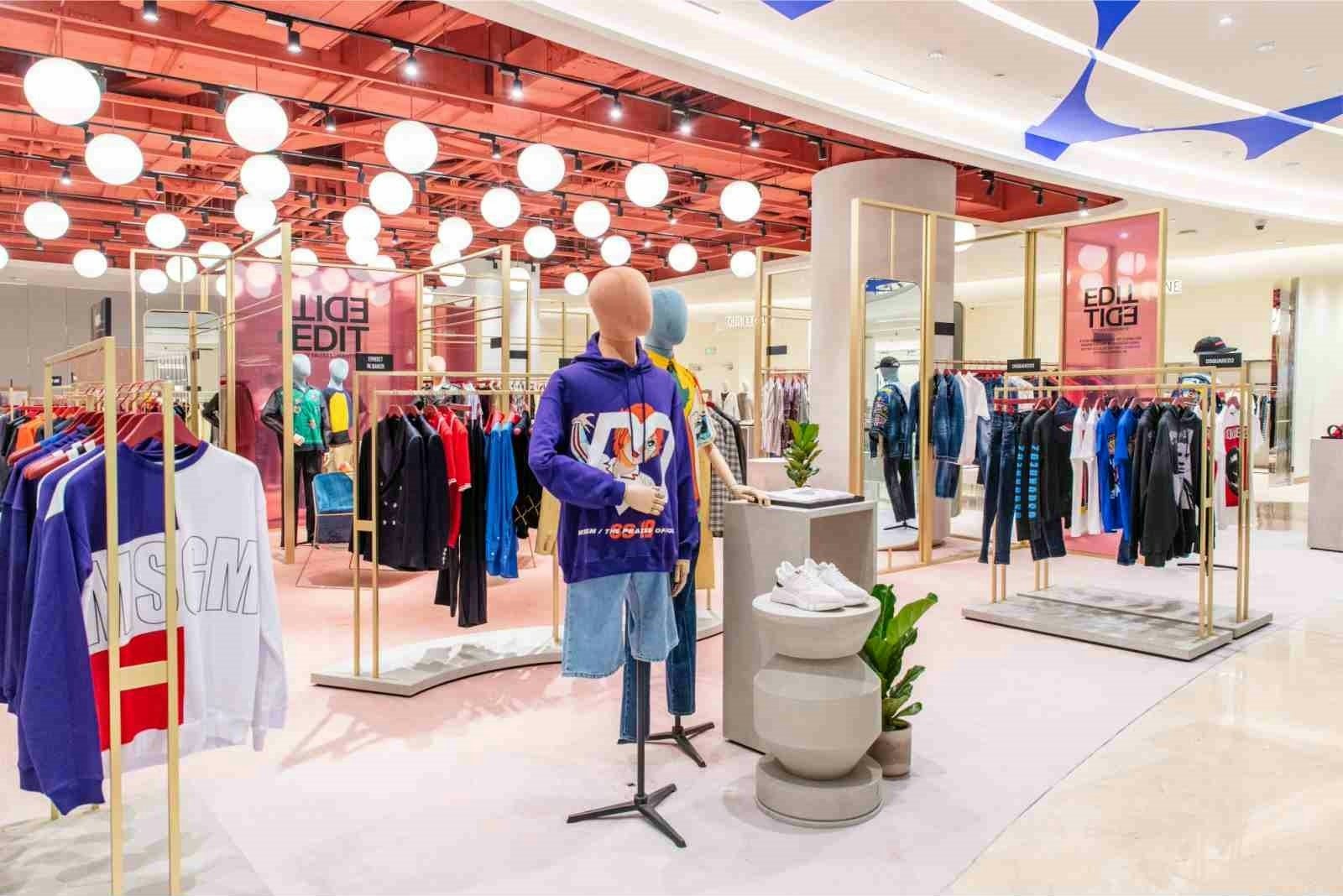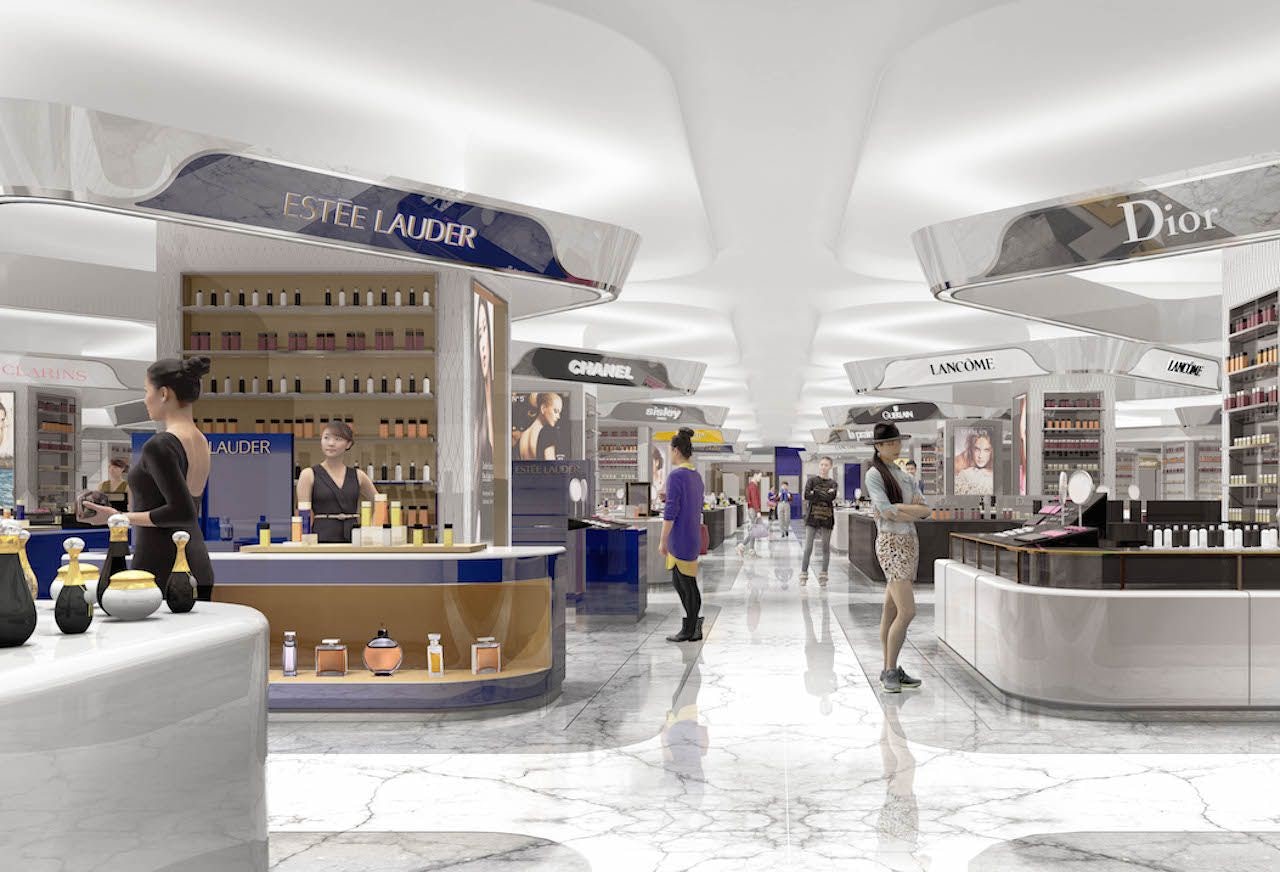Ambush. Jacquemus. Maison Margiela. Simone Rocha. Some of fashion’s hottest indie designer brands have found a new home in China, and it's inside the Galeries Lafayette’s Shanghai store that had a soft opening at the end of March.
This 120-year-old department store's recent retail development in China, which was completed as a 50/50 venture with the fashion and investment conglomerate Hong Kong I.T. Group (HKIT), is Galeries Lafayette's latest expansion in the world’s largest luxury market — a market that the company hopes will deliver a significant portion of its global sales by 2025.
As early as 1997, the French firm rushed into China by opening a store on Wangfujing (王府井) Street, one of Beijing’s busiest and oldest shopping districts, but the store only survived for a year. Then in 2013 (16 years later), Galeries Lafayette made a comeback in the commercial area of Xidan (西单) in Beijing. Six years on, the Beijing store, which shares the shopping district with a raft of other high-end shopping malls from Joy City (大悦城) and Hanguang Department Store (汉光百货) to Grand Pacific Mall, can hardly be called a success.
Enter the Shanghai store. Spanning over 25,000 square meters and five-floors, it's located within the newly-launched L+Mall commercial center in Lujiazui (陆家嘴), Pudong. Compared to Shanghai’s fully-packed commercial zone Puxi, Pudong’s Lujiazui has a much less developed retail landscape, albeit one with great purchasing potential from workers at top-tier financial institutions and businesses. And according to Galeries Lafayette’s China team, Pudong is a thriving hub and key growth area that has access to over 600,000 workers and residents.

The new store attempts to impress consumers with a load of niche and trendy fashion brands, some of which including Comme des Garçons and Maison Kitsune are being sold in mainland China for the first time. “In China, we have seen a shift in consumer expectations," said a Galeries Lafayette China spokesperson. "Chinese consumers are ready for a new offer of fashion across all price points. They don’t want what everybody else has. They want something unique, fresh, and exclusive.”
The company sounds confident, but will business unfold the way it is expecting? “I’d say Galeries Lafayette is already on a promising track in positioning itself as a nimbler player by offering hip designer brands in a curated format to counter and supplement the established luxury brands in a boutique experience offered by the IFC Mall nearby,” said Ray Ju, the New York-based Senior Consultant of Labbrand.
Galeries Lafayette's new position in Shanghai makes perfect sense in a fashion world where the next generation of shoppers are disrupting previous definitions of luxury by adding elements of pop culture and streetwear into the mix — something that's given rise to non-traditional brands like Supreme, Off-White, and Kith in China. However, the department store might be overestimating the sophistication of Chinese luxury consumers. China’s love of niche and indie fashion brands is, thus far, massively lagging behind the West, no matter how quickly they're able to learn about fashion trends and tastes, pointed out the global consultancy McKinsey & Company in its most recent consumer report.
“The concept of a niche brand has multiple meanings across luxury segments, from one that exhibits unique design to those that are a niche in the sense of being rarely seen on the street, or simply not available in mainland China,” wrote McKinsey & Company. “In any case, China’s luxury market has yet to develop the widespread sophistication necessary to sustain demand for truly niche or boutique brands, as has been the case in the West.”
By eschewing mainstream, ultra-luxury brands and focusing solely on niche fashion designer labels, Galeries Lafayette has — at the very least — created a unique selling point for itself in Shanghai, although one that also comes with inherent risk. The company is hoping to target highly-educated, well-traveled, and cutting-edge millennials who are eager to learn more about fashion and the stories behind it.
Chenyi Wei, a 29-year-old Chinese woman who works at an international investment bank at Lujiazui and previously pursued a master degree in the United States told Jing Daily that she only knew a few brands at Galeries Lafayette upon her first visit there, which “lowered my interest in revisiting it.” However, Wei did not rule out the possibility of returning if the store were to provide future events and interactions that she might not be able to find anywhere else.

As McKinsey noted in the same report, niche luxury and fashion brands have the potential to grow and gain traction among Chinese shoppers in the current social and economic environment. The younger generations, in particular, tend to care much less about names and more about experience and story-telling in their interactions with brands.
Therefore, Galeries Lafayette's forward-looking fashion statement needs more work to make it truly resonate with a digital-savvy crowd in China. Ju adds, “I’m looking forward to seeing Galeries Lafayette create more online and offline synergies, setting up digital engagements in its retail space, and leveraging social platforms like WeChat, TikTok, and Red in a smart way, which would naturally invite the highly digital-native audience to join the brand experience with an expectation of being immersed with something new and fun.”


